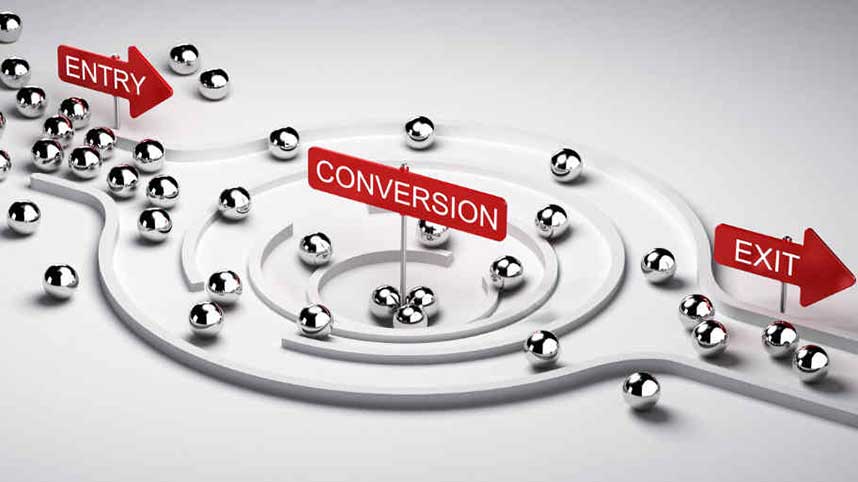
The psychology of conversion reveals why customers take action. Learn essential principles that every business owner should understand to boost engagement, increase leads, and grow revenue.
The psychology of conversion shows that driving traffic to your website is only the first step in turning visitors into customers. To succeed in today’s competitive landscape, you also need to master the art of conversion. Without conversions, you’ll see low ROI on marketing initiatives.
For better conversion rates, understanding the psychology behind what makes a prospect buy or reach out to your company can help you maximize the outcomes from your website traffic.
The language you use on your website directly impacts your website’s conversion rates. Here are some smart ways to use psychology to encourage conversion.
Scarcity builds tension for the customer and can build urgency that if they don’t act now, they’ll miss out. Fear of missing out (FOMO) is a major motivational driver for consumers.
Some ways to incorporate FOMO into your marketing include using the following:
Scarcity has deep psychological roots. Marketing research shows that scarcity works best for utilitarian products, though it does apply to all products that a consumer shops for.
Consumers are social creatures. They look for cues for what to buy from their peers. Including reviews, ratings and case studies can lend credibility to your marketing claims while building trust with the consumer. Couple social proof with endorsements or certifications to establish authority, and you can tip the consumer’s mind toward believing you are the right company to buy from.
Some ways to use social proof in your marketing include:
Dr. Robert Cialdini studied persuasion and created his six principles to help bring people around to your message. One of those principles is social proof and another is authority. These concepts have been used to guide hotel guests to reuse towels to conserve energy and found it to be very effective.
Reciprocity is another one of Dr. Cialdini’s principles of persuasion. In this, you offer something to the customer first, such as a free trial or e-book. This can make the consumer feel compelled to reciprocate and give you something, such as their contact information or a sale.
Some ways to use this form of persuasion in your marketing to see a greater conversion rate include:
One reason reciprocity works is because it builds lasting relationships. Research confirms that such marketing practices can establish brand loyalty because they capitalize on human instinct.
Once a customer shares their contact information or opts into your marketing, you should be consistent in your interactions with them. Don’t let long periods go by where they don’t hear from you.
And as you communicate, consider increasing the commitment level with your company. This might start with a newsletter sign up, then a quiz to guide them toward the product that best supports their needs, asking them to add the product to a wish list, and finally making them aware of specials or reasons to buy.
Dr. Cialdini’s research found that the smaller the initial action, the more a consumer is likely to take that action. Smaller commitments result in far greater conversion rates. Use that to your advantage and think through the lowest commitment conversion you can offer to a customer initially to get them into your marketing funnels and build a conversation and relationship with them.
Price is not absolute. It is relative. When you price your products slightly higher than you need to for your goal ROI, it gives you room to make the consumer offers to make the product or service more appealing. This frames and influences the consumer’s behavior as they feel they are getting a good deal.
Some ways to do this in your marketing include:
Nobel laureates Tversky and Kahneman documented that people’s reasoning strategies are flawed and biased. This leaves room to use that bias toward discounts and lack of full ability to use logic to influence consumers.
Much like FOMO, customers hate to think they’ll lose a service or functionality if they don’t act. This is most applicable to service-based businesses that offer free trials or limited use of a product for free.
Use this language to highlight when a trial ends. Make it clear that they’ll lose certain functionality instead of highlighting what they’ll gain. While that might seem counterintuitive because a paid version of a product offers more functionality and you designed the product’s functions to be attractive to your customer, the fear of losing what they have might be more impactful than telling them what they’ll get.
While research shows these principles apply in marketing, every audience is unique. How your customers react to verbiage, placement, color and characteristics of your calls to action will vary based on who they are. The best thing you can do to improve your conversion rates is to A/B test your buttons and calls to action.
Some aspects of your conversion marketing you should A/B test include:
Website testing can offer incredible insights to help you tailor the site to your audience. New Light Digital provides conversion rate optimization (CRO) to improve ROI of all marketing initiatives with better calls to action. Our expert team can also work with you to A/B test website elements to find what works best for your specific audience. Schedule your free consultation now.
Further reading: